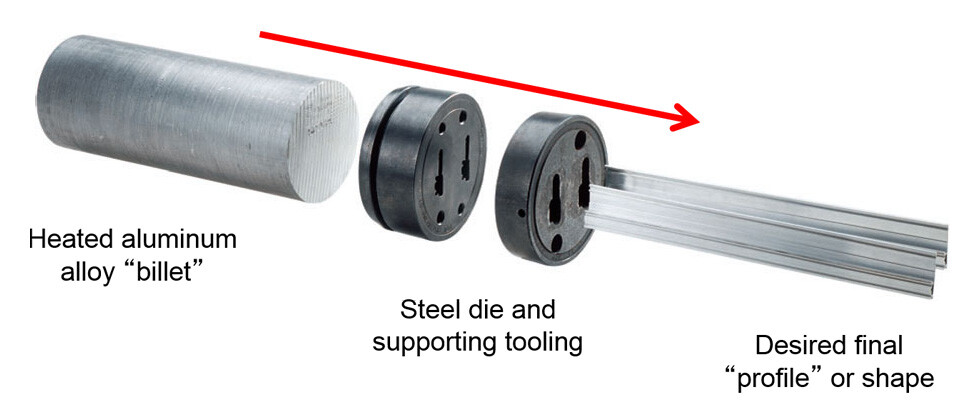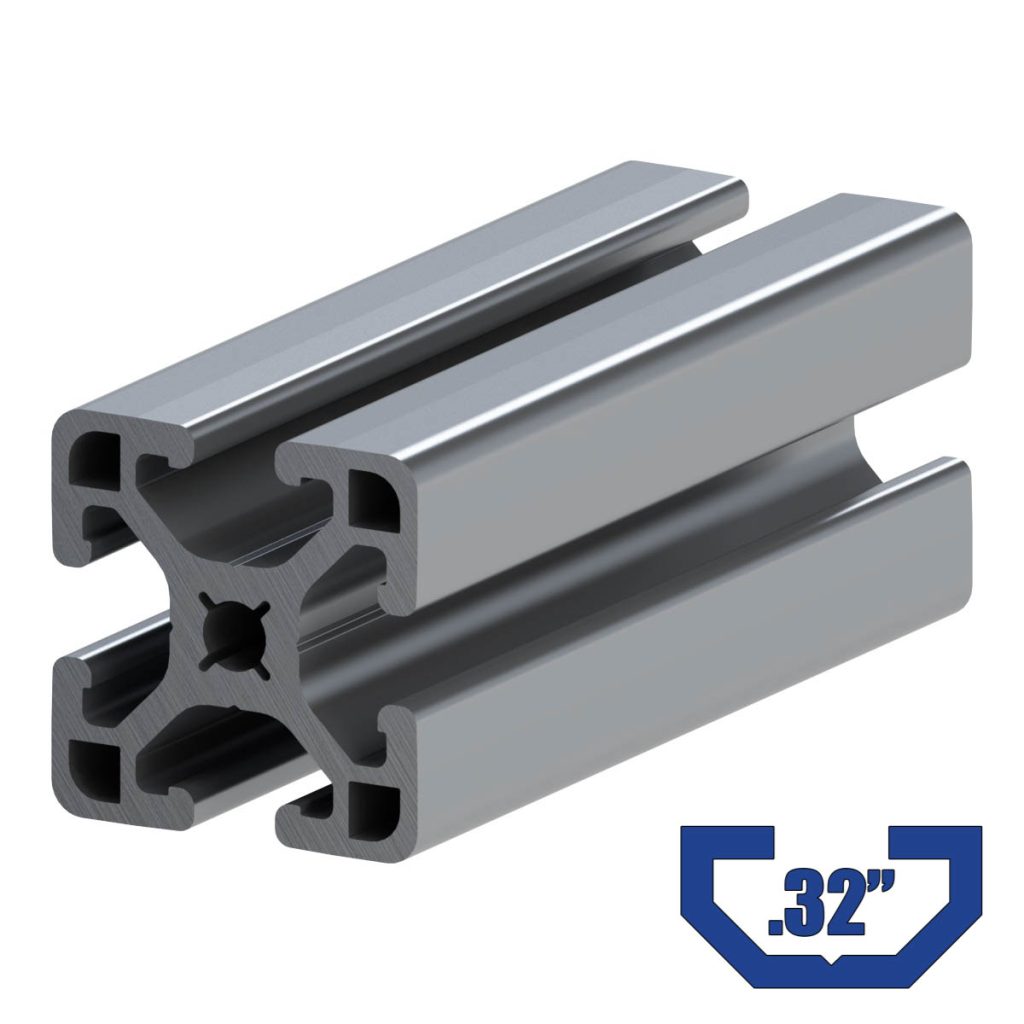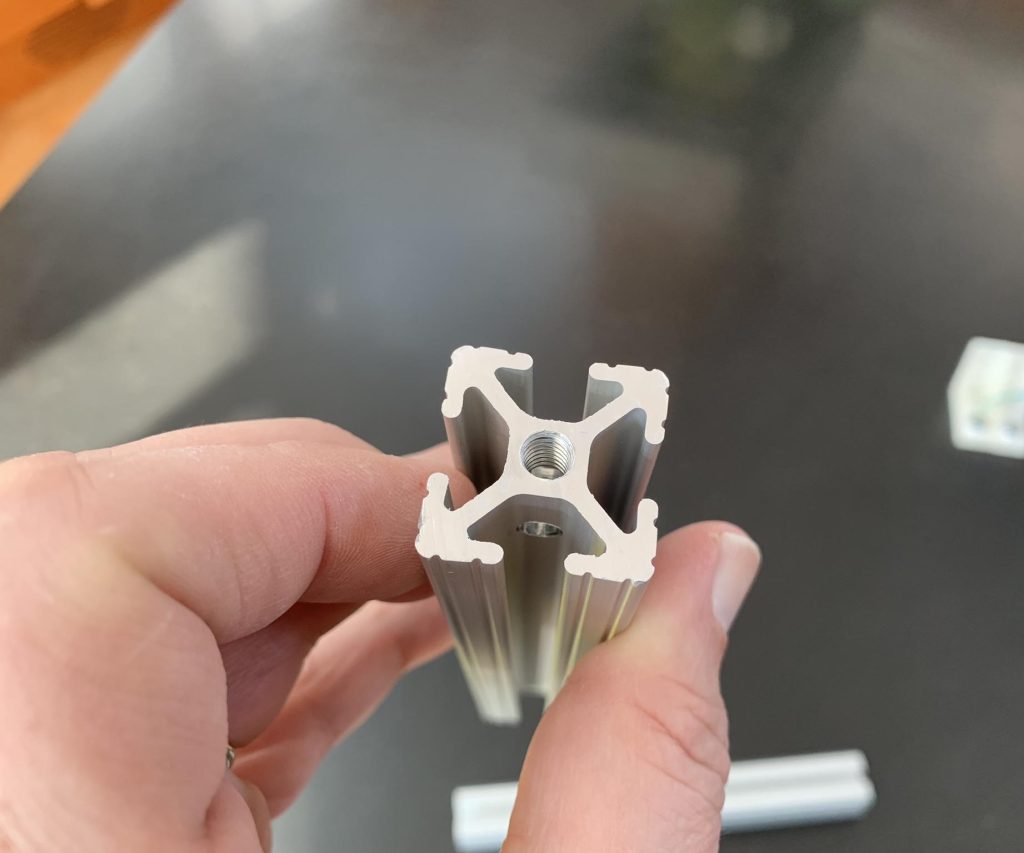Table of Contents
Paragraph 1:
Aluminum is one of the most versatile and widely used metals in the world. Its unique properties make it an essential material in many industries, from aerospace to construction. However, to fully utilize its potential, it is crucial to know how to properly stretch-harden extruded aluminum.
Paragraph 2:
Stretch hardening is a process that improves the mechanical properties of aluminum, making it stronger and more durable. This technique involves stretching the metal beyond its elastic limit, which causes permanent deformation and rearrangement of its crystal structure. In this article, we will explore the steps involved in stretch hardening extruded aluminum and the benefits of this process.
- Firstly, heat the extruded aluminum to a temperature between 350-500°F in a furnace or oven.
- Once the aluminum reaches the desired temperature, hold it at that temperature for a minimum of 30 minutes to ensure it is evenly heated.
- After the heating process, remove the aluminum from the furnace and place it onto a stretching table.
- Stretch the aluminum by pulling it in one direction until it reaches the desired shape and size.
- The aluminum must then be cooled rapidly by quenching it in water or air to maintain the shape and hardness.
How to Properly Stretch Harden Extruded Aluminum?
Stretch hardening is a process that is commonly used to improve the strength and durability of extruded aluminum. This process is achieved by applying a tensile stress to the metal, which causes it to become stronger and more resistant to deformation. In this article, we will discuss the steps involved in properly stretch hardening extruded aluminum.
Step 1: Annealing
The first step in the stretch hardening process is annealing. Annealing is a heat treatment process that is used to soften the metal and prepare it for stretching. During this process, the aluminum is heated to a specific temperature and then slowly cooled. This process helps to eliminate any residual stresses and make the metal more ductile.
Once the aluminum has been annealed, it can be stretched to increase its strength. Stretching can be achieved through a variety of methods, including roller leveling, stretch leveling, and tension leveling. Each method has its own advantages and disadvantages, so it is important to choose the method that is best suited for your particular application.
Step 2: Stretching
Stretching is the key step in the stretch hardening process. During this step, the aluminum is pulled in a specific direction to increase its length and decrease its thickness. This process causes the metal to become stronger and more resistant to deformation.
There are several factors to consider when stretching extruded aluminum, including the amount of force that is applied, the speed of the stretching process, and the temperature of the metal. It is important to carefully monitor these factors to ensure that the aluminum is stretched properly and does not become damaged or deformed.
Step 3: Aging
After the aluminum has been stretched, it undergoes an aging process. Aging is a heat treatment process that is used to further increase the strength and durability of the metal. During this process, the aluminum is heated to a specific temperature and held at that temperature for a certain amount of time.
The aging process causes the aluminum to undergo a series of chemical changes, which strengthen the metal and make it more resistant to deformation. The length of the aging process and the temperature at which it is performed depend on the specific alloy of the aluminum being used.
Benefits of Stretch Hardening Extruded Aluminum
Stretch hardening extruded aluminum offers a number of benefits over other methods of strengthening aluminum. One of the primary benefits is increased strength and durability. This can be especially important in applications where the aluminum will be exposed to high levels of stress or wear and tear.
Another benefit of stretch hardening is increased dimensional stability. This means that the aluminum is less likely to deform or warp over time, which can be important in applications where precision is critical. Additionally, stretch hardening can improve the surface finish of the aluminum, making it more attractive and easier to work with.
Stretch Hardening vs. Other Methods
While stretch hardening is an effective method for strengthening extruded aluminum, it is not the only method available. Other methods, such as work hardening and precipitation hardening, can also be used to improve the strength and durability of aluminum.
Work hardening involves subjecting the aluminum to repeated cycles of deformation, which causes it to become stronger. Precipitation hardening involves adding certain elements to the aluminum that cause it to undergo a chemical reaction, which increases its strength.
Overall, the best method for strengthening aluminum depends on a variety of factors, including the specific alloy being used, the application of the aluminum, and the desired level of strength and durability.
Conclusion
Stretch hardening extruded aluminum is an effective method for improving the strength and durability of aluminum. By carefully following the steps outlined in this article, you can ensure that your aluminum is properly stretch hardened and ready for use in a variety of applications. Whether you are working on a DIY project or a large-scale industrial application, stretch hardening can help you achieve the results you need.
Frequently Asked Questions
Stretch hardening is a process used to increase the strength of extruded aluminum. If you’re looking to properly stretch harden your aluminum, you may have some questions. Here are five common ones with detailed answers.
What is stretch hardening and why is it important?
Stretch hardening is a process used to increase the strength of extruded aluminum. This process involves stretching the aluminum beyond its yield point, resulting in a permanent deformation that increases its strength. Stretch hardening is important because it allows manufacturers to produce stronger and more durable aluminum products.
The process is commonly used in the aerospace, automotive, and construction industries where strong and lightweight materials are needed. Properly stretch hardened aluminum can withstand more stress and fatigue, making it ideal for use in products that need to withstand harsh environments.
What are the benefits of stretch hardening?
Stretch hardening has several benefits that make it a popular process for increasing the strength of extruded aluminum. The main benefit is that it increases the strength of the aluminum without adding weight. This makes it ideal for use in applications where weight is a concern, such as in the aerospace and automotive industries.
Stretch hardening also improves the fatigue life of the aluminum, making it ideal for use in products that need to withstand repeated stresses. Additionally, stretch hardening can improve the surface finish of the aluminum, making it more resistant to corrosion and other forms of wear and tear.
What are the steps involved in stretch hardening extruded aluminum?
The process of stretch hardening extruded aluminum involves several steps. First, the aluminum is heated to a specific temperature to make it more malleable. Then, it is placed in a stretching machine where it is stretched beyond its yield point. This results in a permanent deformation that increases the strength of the aluminum.
After the stretching process is complete, the aluminum is quenched in water to cool it down. This helps to lock in the changes made during the stretching process. Finally, the aluminum is aged at a specific temperature for a set period of time to further increase its strength and durability.
What factors affect the stretch hardening process?
Several factors can affect the stretch hardening process, including the temperature of the aluminum, the amount of stretching applied, and the cooling rate after stretching. The temperature of the aluminum is critical, as it needs to be heated to a specific temperature to become malleable enough for stretching.
The amount of stretching applied also plays a role in the process. Too little stretching will not result in a significant increase in strength, while too much stretching can cause the aluminum to fracture. Finally, the cooling rate after stretching can affect the final strength of the aluminum. A slower cooling rate can result in a stronger aluminum, but it can also lead to more distortion and warping.
What are some common mistakes to avoid when stretch hardening extruded aluminum?
One common mistake to avoid when stretch hardening extruded aluminum is not heating the aluminum to the correct temperature. If the aluminum is not heated enough, it will not be malleable enough for stretching, resulting in a weaker final product.
Another mistake to avoid is stretching the aluminum too much or too little. Stretching the aluminum too much can cause it to fracture, while stretching it too little will not result in a significant increase in strength. Finally, it’s important to cool the aluminum down properly after stretching. If the aluminum cools too quickly or too slowly, it can affect the final strength and durability of the product.
In conclusion, properly stretch hardening extruded aluminum is a crucial step in the manufacturing process of aluminum products. It not only increases the strength and durability of the material but also enhances its overall quality. By following the correct procedures and guidelines, manufacturers can ensure that their aluminum products meet the required industry standards and exceed customer expectations.
Furthermore, stretch hardening can be a complex process that requires careful attention to detail and precision. It involves the use of specialized equipment and techniques that must be executed correctly to achieve the desired results. Therefore, it is essential to work with experienced and knowledgeable professionals who can guide you through the process and ensure that your aluminum products are of the highest quality.
In summary, stretch hardening is an essential process that can make a significant difference in the performance and longevity of aluminum products. By understanding the process and working with skilled professionals, manufacturers can produce high-quality and durable aluminum products that meet the demands of their customers and the industry.
Request a quote today!
[contact-form-7 id="1578" title="Contact form"]
Please compress the file into a ZIP or RAR file before uploading. Alternatively, send through your RFQ by email.
enquires@unitymanufacture.com





